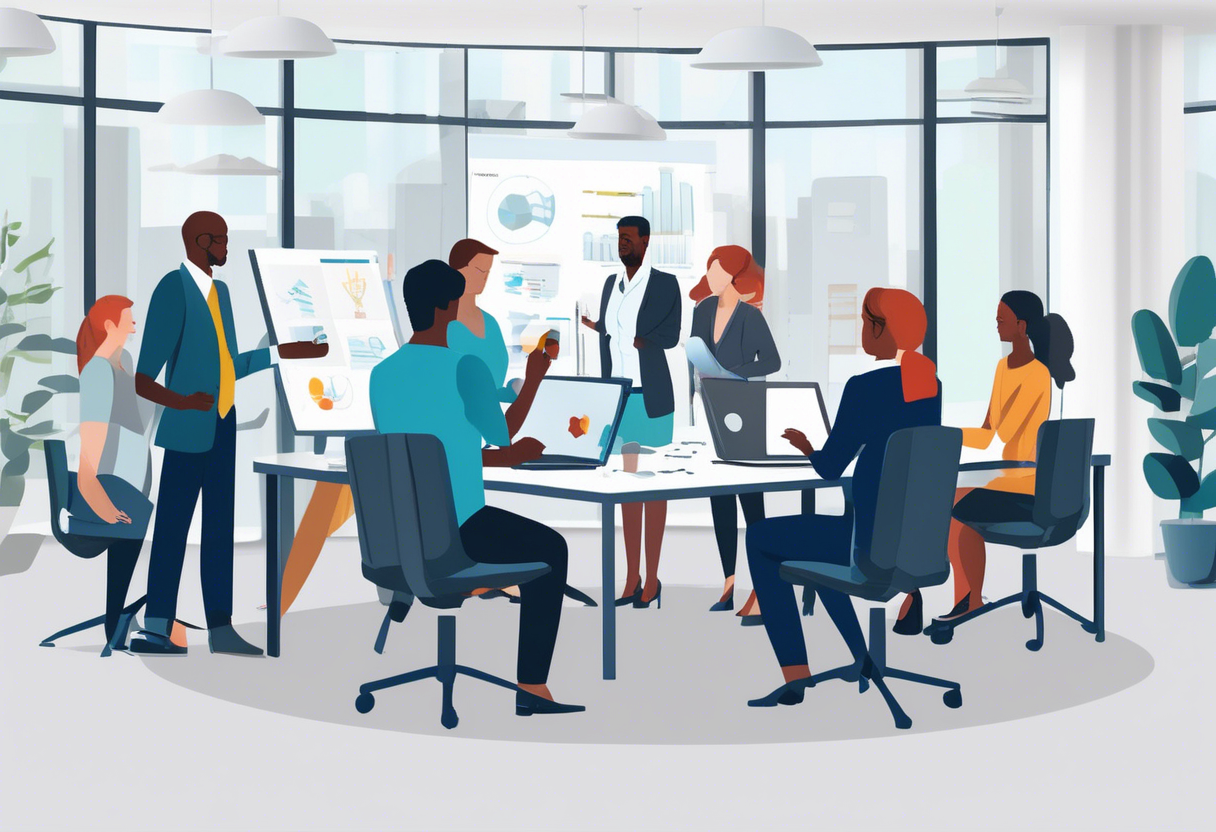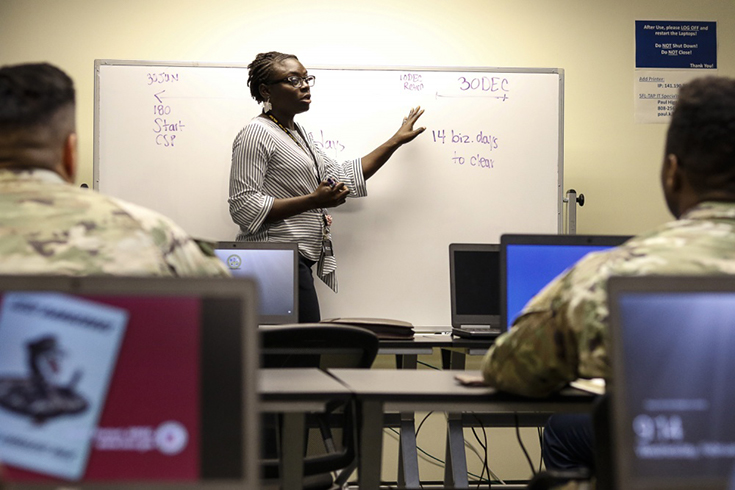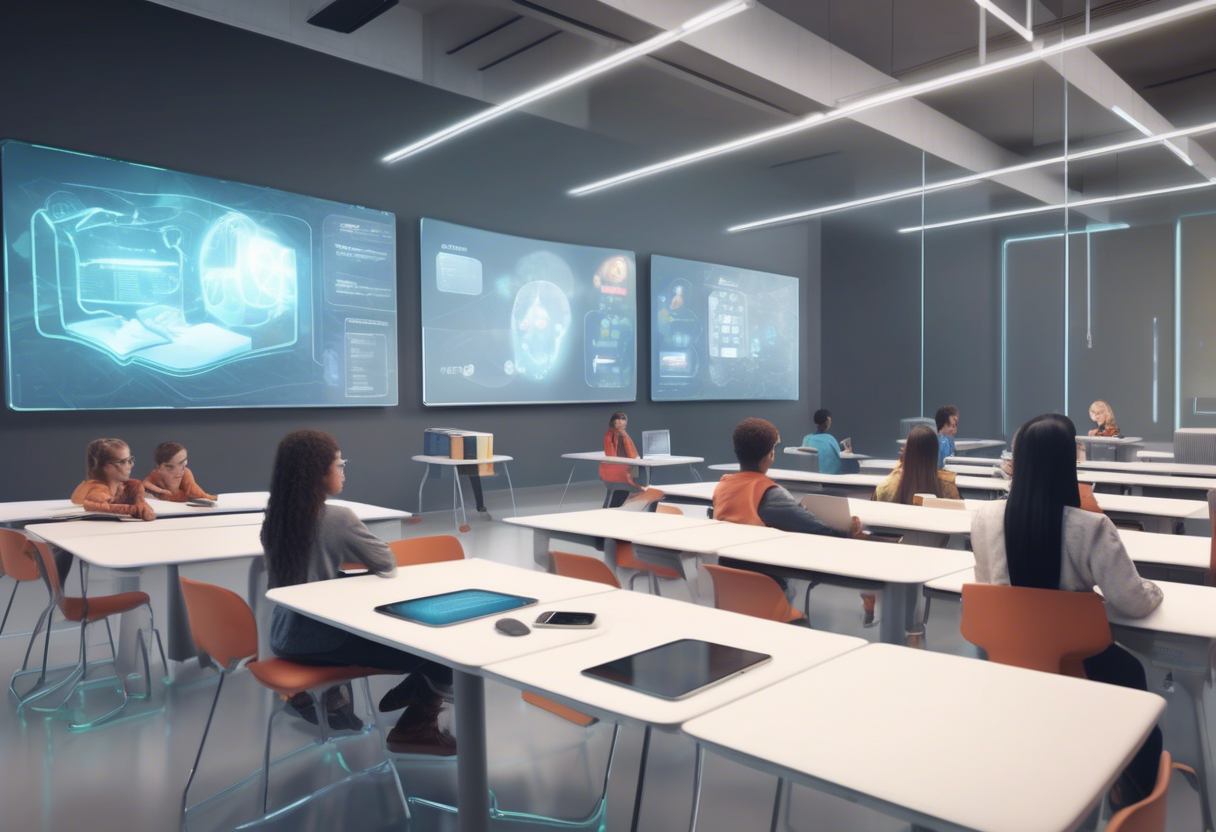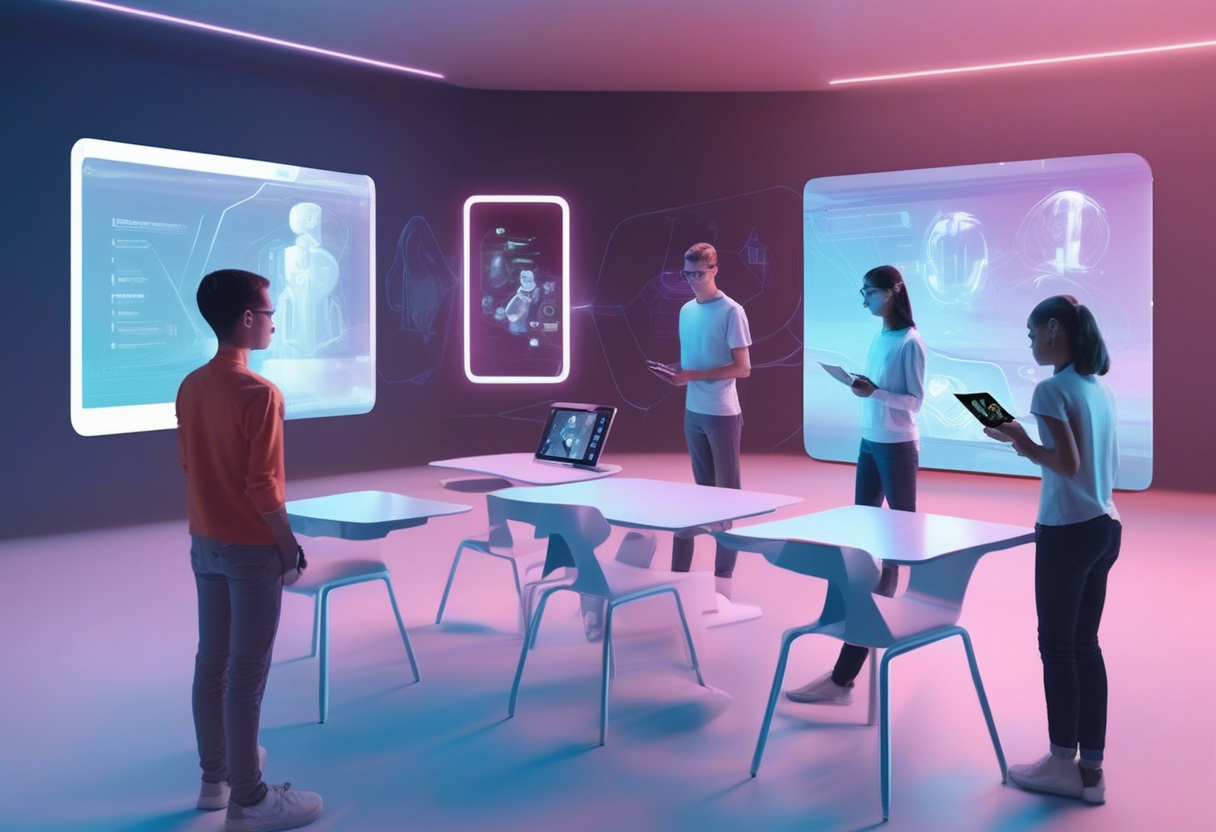
Technology's moving fast, especially with AI changing the game for many industries. Adapting is key. Did you know that 87% of companies say they have a skills gap or expect one soon? That shows how important it is for businesses to focus on reskilling their teams to keep up with AI. But what does reskilling really mean, and how can companies do it right? In this article, we'll break down the differences between upskilling and reskilling in the world of AI. We’ll look at current workforce skills and offer a clear, step-by-step guide to creating AI-focused learning programs. Plus, we'll talk about why ongoing learning matters, the role of leadership, and how to keep employees motivated during these changes. Stick around to learn how to prepare your team for the future!
Defining Upskilling vs. Reskilling in the AI Context
Key Differences Between Upskilling and Reskilling
Upskilling is all about boosting the skills you already have. Think of it as leveling up in your current job, like when customer care reps learn to use generative AI and chatbots.
On the flip side, reskilling is about picking up new skills to switch to a different job, say from data processing to web development. Both are key to keeping up with AI-driven workplace changes.
AI Challenges Impacting Workforce Reskilling
AI is shaking things up, changing over half of today's jobs. Many skills might not cut it in five years, so upskilling and reskilling are a must.
- About 40% of workers will need to reskill in the next three years to keep up.
Companies need to encourage a culture of constant learning and flexibility to help employees handle new roles and tech shifts from AI. Soft skills like critical thinking and adaptability are becoming even more important. They're what set us apart from AI.
Evaluating Current Workforce Skills for Reskilling
Leveraging AI-Driven Talent Profiles for Workforce Reskilling
AI-driven talent profiles simplify and enhance the accuracy of evaluating employee skills. By automating this process, these profiles provide detailed reports that improve workforce skill assessment. Platforms like Korn Ferry Assess connect these evaluations to development opportunities, making talent management actionable.
For instance, AI tools analyze self-assessments, manager feedback, and test results to identify strengths and skill gaps. This information is crucial for guiding personalized reskilling programs.

Identifying Skill Gaps for Effective Reskilling
Identifying skill gaps involves a combination of self-assessments, manager feedback, 360-degree reviews, skills tests, and work simulations. This comprehensive approach provides a complete picture of your workforce's capabilities. A mixed approach ensures both reliability and practicality.
Competency-based reviews and formal tests not only confirm existing skills but also highlight areas needing development. For example, post-assessment results might reveal a need for your team to enhance their advanced data analysis skills, prompting targeted reskilling initiatives.

Step-by-Step: Tailoring Learning Programs for Workforce Reskilling
Identify Workforce Learning Needs
To effectively reskill your team, it's crucial to identify their specific learning needs. Here's how:
Methods for Identifying Learning Needs
- Self-Assessments: Allow employees to self-evaluate and recognize areas where they need improvement.
- Surveys: Collect data to identify skill gaps within the team.
- Interviews: Gain deeper insights into individual motivations and challenges.
- Performance Data: Analyze hard data to pinpoint areas of strength and struggle.
These methods collectively provide a comprehensive view of your team’s skills and growth areas. For more on this, check out Tailor Academy.

Understand Individual Learning Requirements
Once you've gathered the necessary data, delve into understanding what each person needs to improve or achieve.
- Role Analysis: Examine how skill gaps might impact their work.
- Dialogue: Engage in conversations to ensure your findings align with their perspectives.
This understanding is key to creating tailored learning goals. For more, visit Stitching Mall.
Define Learning Objectives for Reskilling
Establish Measurable Reskilling Goals
With a solid grasp of learning needs, define specific, measurable objectives. These should be based on your needs assessment.
- SMART Goals: Ensure objectives are Specific, Measurable, Achievable, Relevant, and Time-bound.
- Proficiency Targets: Set goals for achieving proficiency in lacking skills by a certain date.
This clarity helps everyone know what to aim for and track progress. More on this at Tailor Academy.
Personalize Objectives to Workforce Needs
While general objectives guide everyone, tailor them to fit each person’s specific gaps and goals.
- Personalization: Recognize individual strengths and career ambitions.
- Focus Areas: For instance, leadership aspirants might focus on soft skills, while others might deepen technical expertise.
Customizing goals keeps learning relevant and engaging. Check out Stitching Mall for more.
Design Adaptive Learning Paths
Create Diverse Learning Pathways
Create flexible learning paths to cater to diverse needs.
- Different Tracks: Provide options like technical skills or leadership development with various modules.
- Personalized Journey: Allow learners to choose what's most relevant to them.
Learn more at Tailor Academy.
Ensure Learning Path Flexibility
Beyond offering different paths, ensure flexibility within them.
- Pacing and Styles: Let learners progress at their own pace and cater to different learning styles.
- Formats: Use various formats like videos and guides, and allow skipping of known modules.
This flexibility empowers learners and boosts motivation. More insights at Stitching Mall.
Select and Customize Learning Content
Develop or Curate Workforce-Specific Materials
Choose or create content that directly addresses skill gaps and learning goals.
- Engaging Content: Ensure materials are engaging and relatable.
- Custom or Curated: Develop custom materials or find quality resources elsewhere.
This relevance helps learners understand and apply new skills. For guidance, see DK.
Incorporate Real-World Learning Examples
Enhance learning with real-world examples, case studies, and scenarios.
- Practical Application: Demonstrate how skills apply in everyday situations.
- Guest Speakers: Invite experts to share insights and experiences.
This variety makes learning more engaging and relevant. More insights at The Fashion Design Institute.
Integrate Focused Skill Development
Concentrate on Key Skills per Segment
Avoid overwhelming learners by focusing on one or two skills at a time.
- Mastery Before Progression: Ensure mastery of each skill before moving on.
- Practice Opportunities: Provide ample practice to build a solid foundation.
For more, refer to Stitching Mall.
Build Workforce Confidence Gradually
Build confidence by starting with basics and moving to advanced concepts as learners improve.
- Celebrate Wins: Recognize small achievements to keep morale high.
- Real-World Application: Encourage applying new skills in practical settings.
This approach supports learners throughout their journey. Additional resources at The Creative Curator.
Provide Resources for Skill Mastery
Offer Varied Learning Resources
Support skill mastery with varied resources.
- Resource Variety: Provide videos, written guides, checklists, and practice exercises.
- Accessibility: Ensure resources are easy to access and organized for quick use.
This variety accommodates different learning styles. More details at DK.
Support Learners with Guidance and Mentorship
In addition to resources, offer support through mentors or coaches and encourage peer collaboration.
- Supportive Culture: Foster an environment where learners feel comfortable seeking help.
This environment enhances skill mastery. More insights at Tailor Academy.
Implement Continuous Assessment and Feedback
Monitor Workforce Progress with Assessments
Use quizzes, assignments, and practical tasks to monitor learner progress.
- Alignment with Objectives: Ensure assessments align with learning objectives for clear progress measurement.
- Regular Reviews: Identify areas where learners need more support.
For guidance, refer to Stitching Mall.
Provide Timely Feedback for Improvement
Feedback is crucial for learning.
- Timely and Specific: Offer feedback that is timely, specific, and actionable.
- Encourage Reflection: Highlight strengths and areas for improvement.
Regular feedback keeps learners motivated and focused. More insights at Tailor Academy.
Adjust Learning Paths for Continued Relevance
Modify Learning Paths Based on Feedback
Be ready to adjust learning paths based on assessments and feedback.
- Revisit and Add Resources: Modify modules or add resources as needed.
- Stay Flexible: Adapt to evolving needs to keep the program relevant and effective.
Further guidance at Stitching Mall.
Ensure Ongoing Workforce Development
Regularly review outcomes and gather feedback to ensure continued progress.
- Embrace New Approaches: Be open to new methods and technologies for continuous improvement.
This dynamic environment supports ongoing development. More insights at Tailor Academy.
Empower Learner Autonomy and Reflection
Use Tools for Tracking Progress
Empower learners by letting them track their progress with tools like skills checklists.
- Personal Goals: Encourage setting personal goals and monitoring advancement.
This promotes autonomy and accountability. More information at Stitching Mall.
Encourage Reflection for Learning Motivation
Encourage regular reflection on the learning journey.
- Reflect on Achievements: Consider accomplishments, challenges, and strategies used.
- Share Insights: Discuss reflections with peers or mentors for further insight.
Reflection helps internalize experiences and reinforces commitment. Additional insights at The Fashion Design Institute.
Facilitate Time and Resource Planning
Clarify Time and Resource Allocation
Help learners plan effectively by explaining the time commitment and resources needed for each module.
- Preparation: Reduce overwhelm and aid in managing the learning journey.
For more information, visit Stitching Mall.
Set Realistic Expectations for Learning
Set realistic expectations for learning investment.
- Effort and Challenges: Be clear about the effort required and potential challenges.
- Growth Mindset: Encourage recognizing that skill development takes time and effort.
Realistic expectations help maintain motivation and resilience. More insights at Tailor Academy.
Step-by-Step: Implementing AI-Driven Learning Tools
AI-Powered Platforms for Workforce Reskilling
AI platforms are transforming the way learning is tailored to each employee's needs. These systems adjust content based on individual progress and track development using OKRs (Objectives and Key Results). This allows you to see exactly how each employee is progressing.
Moreover, these tools are proactive in maintaining skill levels. They identify when skills begin to fade and send timely reminders to keep them fresh. By integrating various AI systems, the learning experience becomes seamless and engaging.
Key features include:
- Intelligent Tutoring Systems: Provide personalized feedback to learners.
- AI Virtual Assistants: Handle routine questions, offering support and freeing trainers from administrative tasks.

For more insights, check out this source.
Simulations and Gamified Reskilling Activities
AI is also at the forefront of creating simulations that mimic real-life situations, enhancing decision-making and problem-solving skills. Gamified activities adapt to your performance, making learning more engaging.
Designing effective learning experiences involves:
- Step-by-step Assignments: These help learners maximize the benefits of simulations.
- AI Assessments: Offer quick feedback, highlighting areas for improvement.
For further reading, visit this source.
Continuous Learning and Feedback
Real-Time Feedback for Reskilling Workforce
Continuous learning often includes real-time feedback to enable employees to quickly identify skill gaps and upskill promptly. AI-driven platforms enhance this process by offering personalized experiences and dynamic feedback, allowing for the refinement of learning paths.

With the integration of data and predictive analytics, companies can conduct skills audits and align feedback with future organizational needs. This approach fosters a culture of ongoing learning by recognizing employees who effectively acquire new skills, thereby maintaining their relevance as the market evolves.
Adaptive Content for Workforce Development
Adaptive learning content is tailored to align with employees' skill levels and career aspirations, facilitating their continuous development. Collaboration with educational institutions ensures that learning materials are regularly updated, providing access to the latest skills.

Promoting a growth mindset is crucial, as it enhances engagement with adaptive content, positioning learning as a pivotal element of career advancement. Flexible programs utilizing adaptive content can swiftly adapt to changes in business and technology, ensuring that employees are well-prepared for future challenges.
Leadership and Cross-Functional Collaboration in Reskilling Workforce
Leadership's Role in Workforce Reskilling
Effective cross-functional leadership involves setting a clear vision and aligning goals with strategic objectives. It's essential for everyone to understand their roles. Leaders should:
- Utilize strong communication skills
- Resolve conflicts efficiently
- Demonstrate empathy to unify diverse teams
The focus should be on setting expectations, being receptive to feedback, and actively participating in collaboration. Identifying key players to foster inclusion and ownership is crucial. For more insights on the importance of clear expectations and team motivation, refer to Helpjuice.
Strategies for Promoting Cross-Functional Collaboration
Cross-functional collaboration thrives when diverse viewpoints are embraced through open discussions and job shadowing. Implementing a communication plan with regular check-ins and fostering a feedback-friendly culture keeps teams aligned. Tools such as Slack aid in project management and ensure seamless communication.
Additionally, organizing learning sessions to explain departmental functions can dismantle barriers and cultivate empathy. Encouraging creativity and celebrating achievements are key to maintaining motivation and fostering innovation. Utilizing frameworks like RACI matrices to define roles enhances accountability.

Enhancing Employee Mindset and Engagement for Reskilling
Communicating AI Benefits to the Workforce
Being open and clear helps ease worries and build trust when bringing AI into the workplace. If you lay out clear guidelines and feedback channels, employees can see how AI fits into the bigger picture.
Offering training in innovative skills makes employees feel more connected to new tech. Recognizing their efforts and tying innovation to performance reviews can encourage them to welcome AI changes. Sharing updates and celebrating quick wins helps keep the energy and trust up as AI gets adopted.

Building a Learning Culture for Workforce Reskilling
Training and development programs, like mentoring, are important for keeping employees engaged and helping them reskill. Programs such as career mentoring, reverse mentoring, and mentoring circles boost knowledge sharing and growth.
Virtual mentoring is a good way to keep people connected in hybrid work setups. A safe environment makes it easier for everyone to join in on learning and innovation. Regular feedback through surveys ensures learning programs keep up with changing needs.
Discover effective strategies.
FAQ
How AI Identifies Critical Reskilling Skills
AI can sift through loads of data from labor markets, industry trends, and even company performance to spot new skill needs and gaps in the workforce. Using machine learning algorithms, AI can analyze job postings, employee performance, and tech changes to predict future skill requirements.
These AI tools provide real-time insights into which skills are becoming outdated and which are crucial, helping organizations focus their reskilling efforts where they're needed most. For instance, an AI platform might scan the skills of all employees and match them with future job market trends, suggesting specific reskilling programs for new roles.

Top AI Tools for Personalized Learning Plans
AI-driven learning management systems (LMS) utilize data about employee skills, learning preferences, and performance to create personalized learning paths. Adaptive learning platforms adjust content difficulty based on learner performance, ensuring an efficient upskilling experience.
Some AI tools also include virtual coaching and feedback, constantly refining learning plans by monitoring engagement and results.
Enhancing Upskilling with AI Virtual Assistants
AI virtual assistants act as on-demand helpers, ready to answer questions and assist employees in applying new skills immediately. They track learning progress, send personalized reminders, and motivate employees to stay on track, improving completion rates.

These virtual assistants also support microlearning by offering small, manageable content pieces and practical exercises that fit into the learner's schedule, making ongoing learning more accessible.